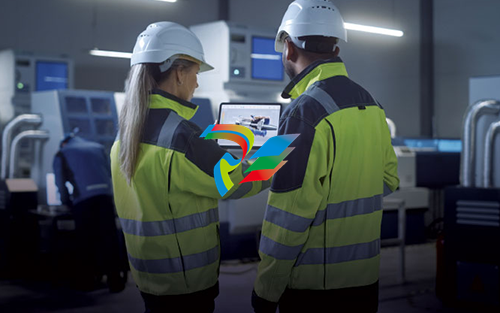
Best Practices for Collaboration Between Industry and Academe

Better collaboration between academic institutions and industry practitioners can improve outcomes for industrial businesses and the schools, professors and students they depend on.
Academic research about education is what substantially shapes higher education, which often leaves manufacturing and industrial businesses complaining about how new engineering graduates lack industry readiness. But if teachers had a better grasp of the applications and perspectives needed by industrial businesses, they could do a better job of creating an educational environment that generates fit-for-employment graduates. Additionally, with better collaboration, the creativity and expertise of academics could be a problem-solving resource for industry.
There is a need for industry to more effectively engage academic experts, and for more useful knowledge exchange. Although automation professionals and faculty are effectively working together in some places, there is a gap between what industry practitioners need and what academic experts provide. More frequent and influential collaborations can lessen that gap.
First, understand why a gap is there. Here are several reasons, categorized by contrasting terms:
Practicable-possible
Although industry requires what is practicable, faculty research is guided by what might be possible (and its mathematical demonstration). That means the knowledge being published in academic journals (like ISA Transactions) rarely affects the practice. Even if relevant, the journal articles require substantial cultural translation to become implementable. If academe is to support the practice, the practice needs to find a way to shape academic research.
Urgency-analytical
Academics work in a precommercial environment and have the investigative time to seek a clear and comprehensive system view of the fundamentals associated with a technical discipline. They want to discover nature and fundamentally defensible procedures. In contrast, practitioners tend to focus on immediate solutions for specific application cases, often using intuitive actions, workarounds, or a shotgun approach. Although true knowledge would be useful to them, situation urgency means practitioners often miss fundamentals that could become helpful.
Sufficiency-perfection
Industrial applications of technology are performed within a complex context, constrained by safety, regulations, human aspirations and more; they are also applied on nonlinear processes. Such aspects are usually imprecisely quantifiable. Application success requires simple solutions, both mathematically and procedurally. By contrast, to achieve career goals, academics often seek complexity of mathematical analysis and proofs of certainty. These necessarily require an idealized context. One side is seeking perfection in an idealized context, while the other is seeking sufficiency in an ambiguous context.
Fruition-fundamentals
Industry wants to make things happen, to create and sustain a productive process or a marketable product. Academe seeks to discover the fundamental principles about nature. One focuses on how to do it, or the synthesis. The other focuses on defense of claims, or the analysis.
When people on one side read the publications of the other, they find little to nothing to address their needs. It is not that one side is doing it all wrong. Each side is doing what is right within its dissimilar environment. The gap between them—the differing goals, motivations, and measures of success—is what makes collaboration difficult.
About the survey
Collaboration, while difficult, is not impossible. In fact, the examples shown elsewhere in this article involving Miami University of Ohio, University of Michigan, and Purdue University are the results of successful collaborations. To bridge the gap in more places and for more institutions and industry practitioners, the International Federation of Automatic Control (IFAC) conducted a survey of best practices.
ISA is one of nine professional societies in the American Automatic Control Council (AACC), which represents the U.S. to the IFAC Industry Committee (Figure 1). An IFAC Industry Committee task force created the survey and analyzed the results, which are presented here.
The survey had 19 questions, about half of which solicited open text responses. The link to the survey was distributed within commercial publications, as well as via direct emails to the members of the IFAC Education and Industry Committees and ISA Divisions. Recipients were encouraged to further distribute the survey to their network of professional contacts. Approximately 260 individuals opened the survey, and 125 completed it.
Of those who provided geographical information, most are from Europe and North America. A total of 24 nations from six continents are represented, with the U.S. and France being the two largest contributors.
Most survey participants have experience in academia. In all, about 60 percent identify with academe and 40 percent with the practice; some claim significant experience in both. It is worth noting that many control practitioners are part of nonprofit, government, military, and even academic organizations, not just industry. So, we use the term “practice” to include all professionals who practice automation and control, regardless of their place of work. That is why we replaced the commonly used expression “university-industry collaboration” with the more inclusive “academic-practice collaboration” throughout the survey and this report.



.jpg)
















































.jpg)
.jpg)





.jpg)



.png)
.jpg)

.jpg)
_lVjBYb.jpg)

.jpg)
.jpg)



.jpg)
.jpg)







.jpg)

.jpg)
.jpg)











.jpg)




.jpg)
.jpg)
.jpg)
.jpg)
.jpg)
.jpg)

.jpg)

.jpg)
.jpg)
.jpg)








